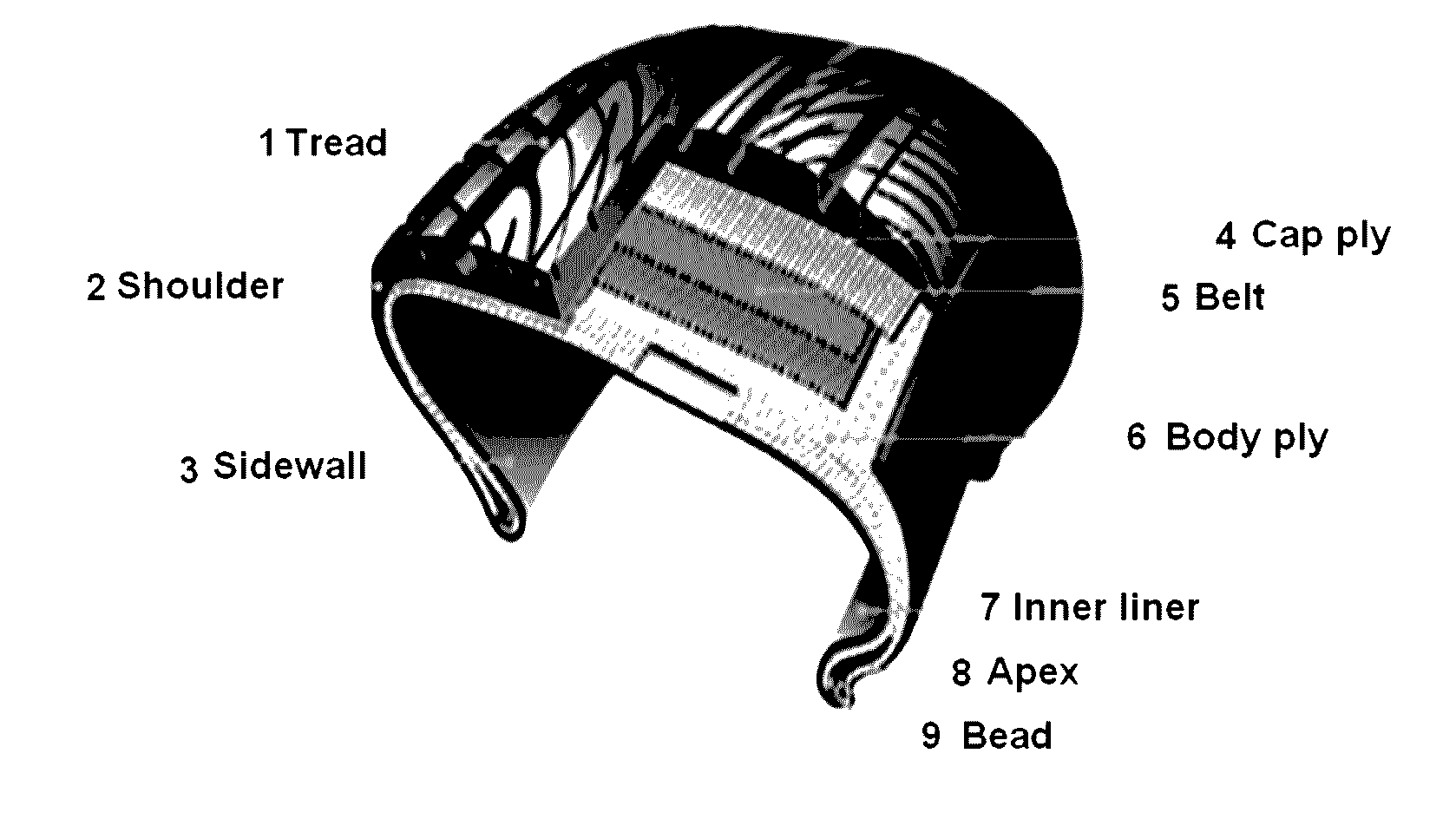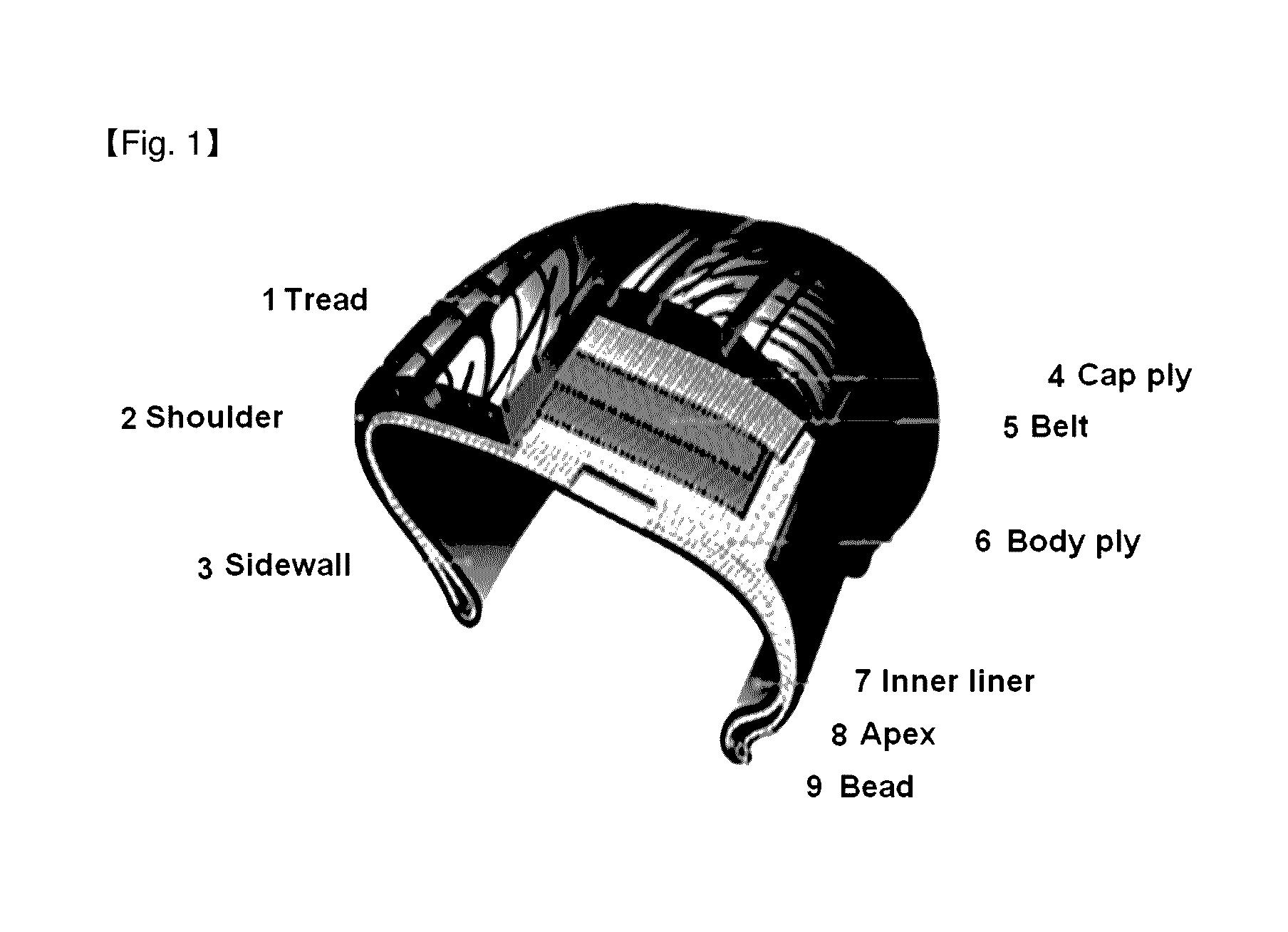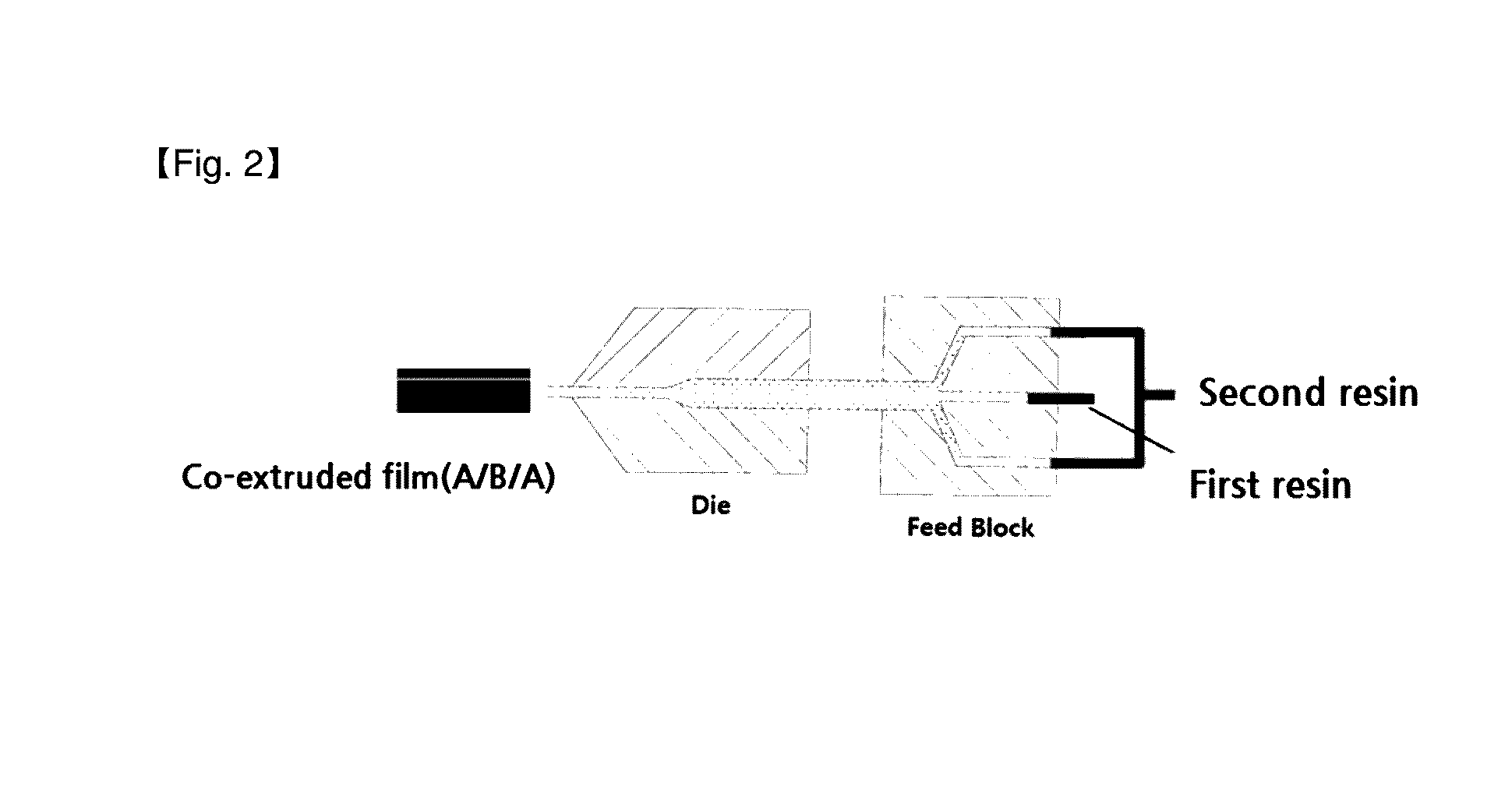Method for manufacturing polymer film and co-extruded film
a technology of coextrusion and polymer film, which is applied in the direction of synthetic resin layered products, friction elements, other domestic articles, etc., can solve the problems of reducing the fuel efficiency of automobiles, increasing the total weight of tires, and difficulty in ensuring sufficient adhesion for
- Summary
- Abstract
- Description
- Claims
- Application Information
AI Technical Summary
Benefits of technology
Problems solved by technology
Method used
Image
Examples
example 1
(1) Manufacturing of a Base Film
[0383]A nylon 6 resin having a relative viscosity (96% sulfuric acid solution) of 3.6 manufactured from ε-caprolactam and a copolymer having a weight average molecular weight of 110,000 containing polyether-based segments whose main chain is an amine group-terminated polypropylene oxide and polyamide-based segments derived from ε-caprolactam (the weight ratio of polyether-based segments:polyamide-based segments is 1:3) were mixed in a weight ratio of 6:4 to produce a first resin.
[0384]Then, the nylon 6 having a relative viscosity (96% sulfuric acid solution) of 3.6 and the copolymer having a weight average molecular weight of 110,000 were mixed in a weight ratio of 4:6 to produce a second resin.
[0385]After drying the first resin and the second resin, respectively, a base film was manufactured by using two extruders and a feed block of a three-layer structure. In the first extruder, the first resin which is a raw material constituting the first resin l...
example 2
(1) Manufacturing of a Base Film
[0392]A polyamide-based resin having a relative viscosity (96% sulfuric acid solution) of 3.8 synthesized by using 95 wt % of ε-caprolactam and 5 wt % of 2-azacyclononanone, and a copolymer having a weight average molecular weight of 100,000 containing polyether-based segments whose main chain is an amine group-terminated polypropylene oxide and polyamide-based segments derived from ε-caprolactam (the weight ratio of polyether-based segments:polyamide-based segments is 1:4), were mixed in a weight ratio of 7:3 to produce a first resin.
[0393]The polyamide-based resin having a relative viscosity (96% sulfuric acid solution) of 3.8 and the copolymer having a weight average molecular weight of 100,000 were mixed in a weight ratio of 4:6 to produce a second resin.
[0394]Then, the copolymer having a weight average molecular weight of 100,000 was used alone as another second resin.
[0395]The first resin and two types of the second resins were used, and three e...
example 3
(1) Manufacturing of a Base Film
[0405]A nylon 6 resin having a relative viscosity (96% sulfuric acid solution) of 3.8 manufactured from ε-caprolactam, and a copolymer having a weight average molecular weight of 120,000 containing polyether-based segments whose main chain is an amine group-terminated polyethylene oxide and polyamide-based segments derived from ε-caprolactam (the weight ratio of polyether-based segments:polyamide-based segments is 1:4), were mixed in a weight ratio of 4:6 to produce a first resin.
[0406]The first resin was injected into liquid nitrogen using Freezer Mill 6750 (SPEX CertiPrep) equipment and pulverized, and then the melt viscosity was measured using Rheo-Tester 2000 (GöttFert) equipment. As a result, the product had a melt viscosity of 4,100 poise at a temperature of 255° C. and a shear rate of 500 s−1.
[0407]Then, the nylon 6 having a relative viscosity (96% sulfuric acid solution) of 3.8 and the copolymer having a weight average molecular weight of 120,...
PUM
| Property | Measurement | Unit |
|---|---|---|
| temperature | aaaaa | aaaaa |
| temperature | aaaaa | aaaaa |
| melt viscosity | aaaaa | aaaaa |
Abstract
Description
Claims
Application Information
 Login to View More
Login to View More - R&D
- Intellectual Property
- Life Sciences
- Materials
- Tech Scout
- Unparalleled Data Quality
- Higher Quality Content
- 60% Fewer Hallucinations
Browse by: Latest US Patents, China's latest patents, Technical Efficacy Thesaurus, Application Domain, Technology Topic, Popular Technical Reports.
© 2025 PatSnap. All rights reserved.Legal|Privacy policy|Modern Slavery Act Transparency Statement|Sitemap|About US| Contact US: help@patsnap.com



